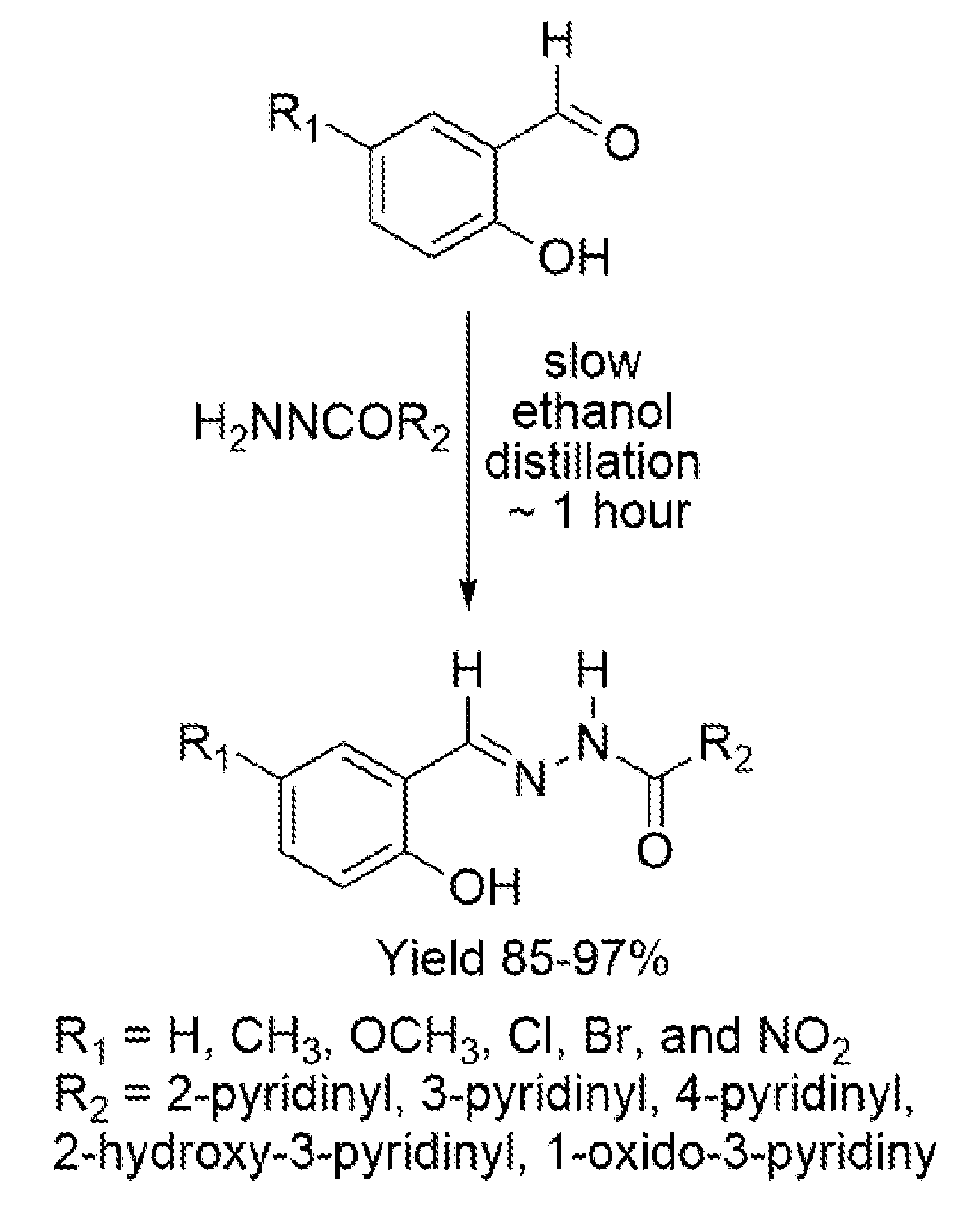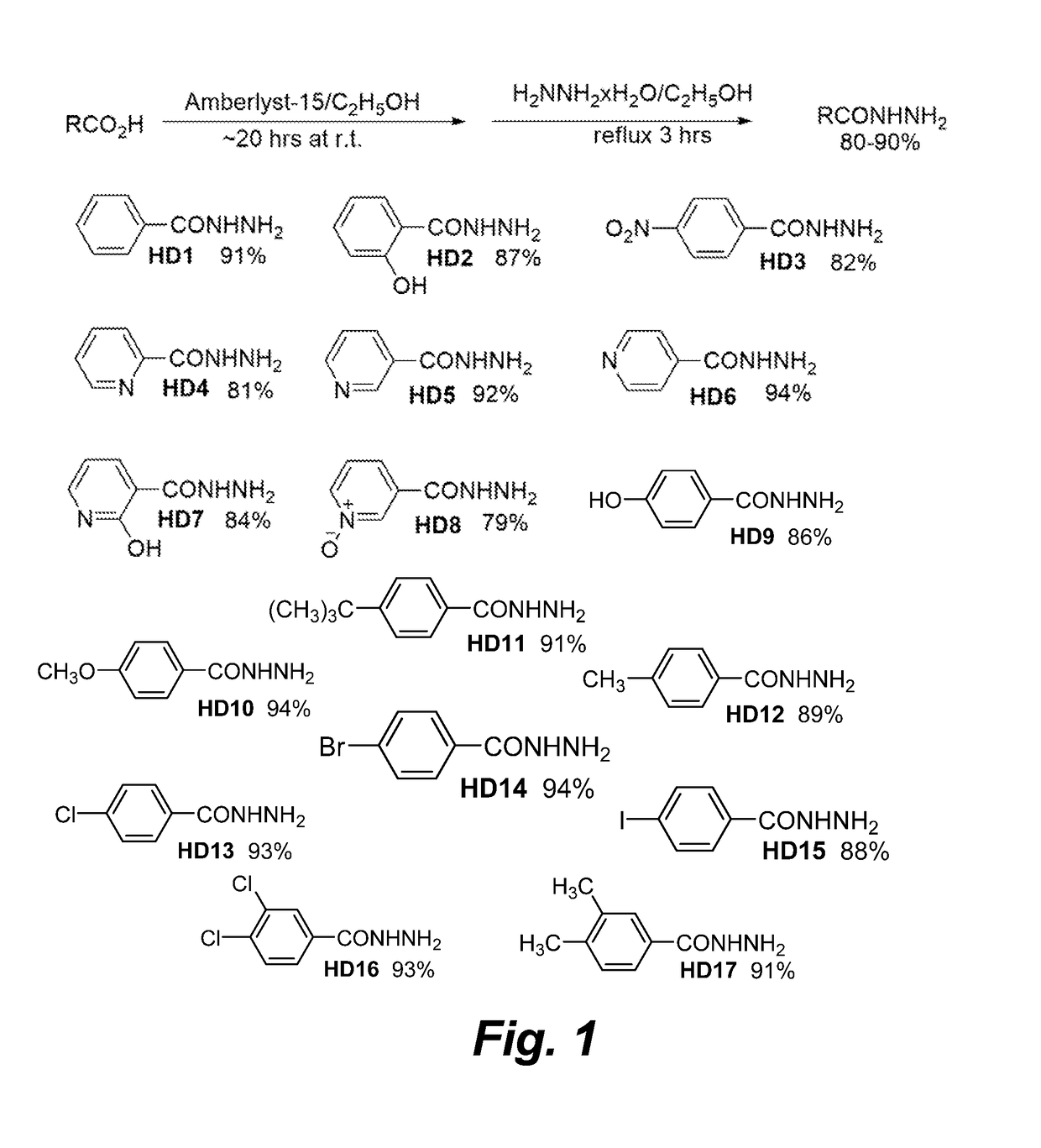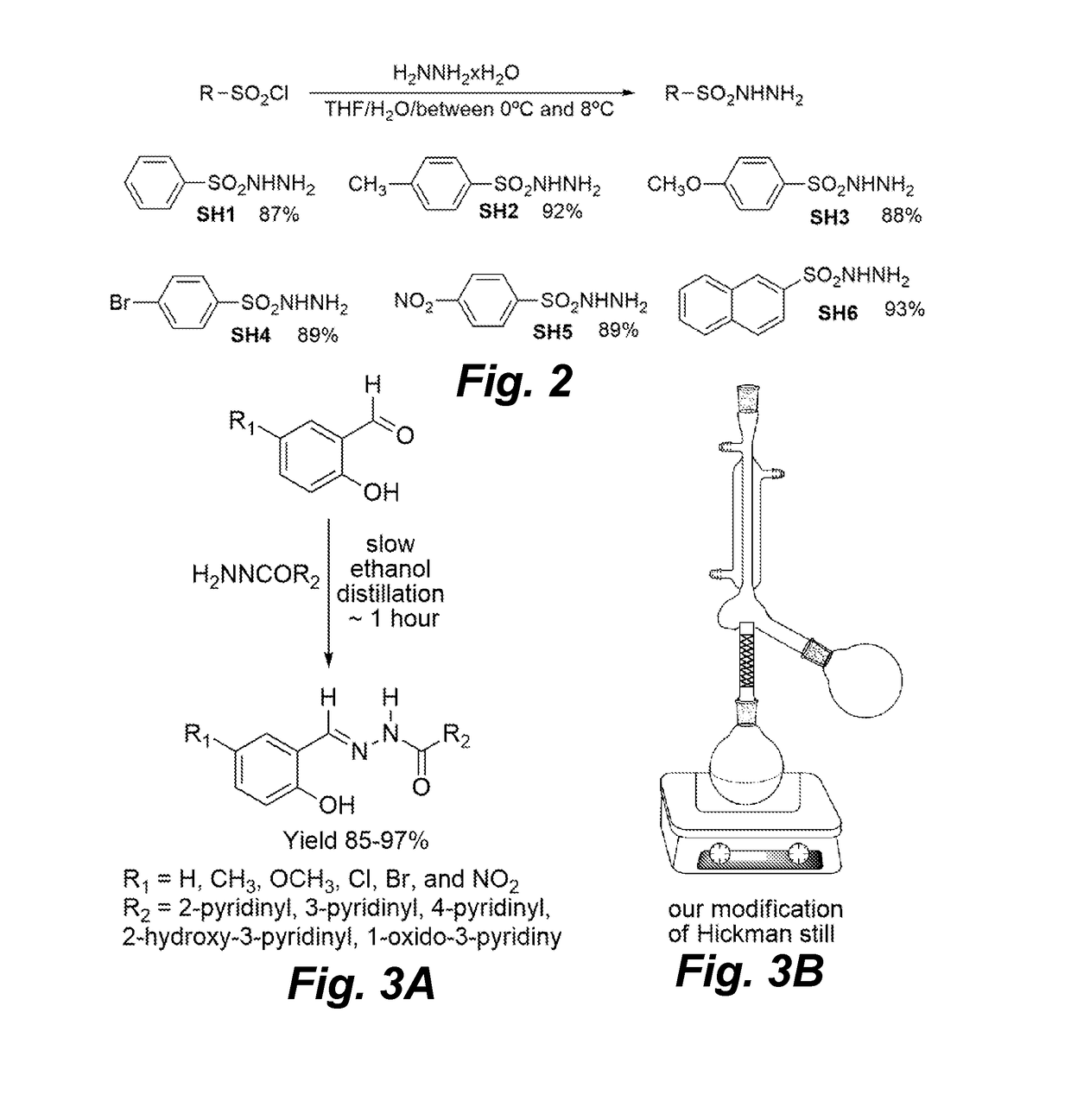Antimicrobial pyridinohydrazide and hydrazomethylpyridine-based agents
- Summary
- Abstract
- Description
- Claims
- Application Information
AI Technical Summary
Benefits of technology
Problems solved by technology
Method used
Image
Examples
example 1
[0175]Chemistry Experimental: Thin-layer chromatographic analysis (TLC) was performed using silica gel on aluminum foil glass plates and was detected under ultraviolet (UV) light. The 1H and 13C NMR spectra were run on Varian 400 MHz Unity instruments in DMSO-d6. The solvent signals were used as internal NMR chemical shift references. All products were purified by crystallization from ethanol. If necessary, intermediate esters in preparation of hydrazides (HD1-HD8, Scheme 1, FIG. 1) were purified by short silica gel (40-70 mm) filtration with various mixtures of ethyl acetate and dichloromethane as eluents. Silica gel was purchased from Sorbent Technologies. Substituted phenylhydrazines were prepared from corresponding anilines by following an existing preparation procedure (Vogel Al. A textbook of practical organic chemistry including qualitative organic analysis. 3rd ed. Wiley; 1966.636-637 p). All solvents were purchased from Fisher Scientific, all reagents were purchased from Si...
example 2
[0176]Preparation 5-nitrosalycilaldehyde: Acetic acid (20 ml) was placed in a large (190×100 mm) crystallization dish equipped with a magnetic stirrer and placed under a fume hood with aqueous sodium carbonate and a nitrogen oxide trap. This acetic acid salicylaldehyde (12.2 g; 0.1 mol) was added to concentrated nitric acid (80 ml). The resulting dark red reaction mixture was stirred at room temperature for approximately 10 minutes, when the reaction started to spontaneously heat up forming a large quantity of nitric oxide (If four times larger reaction scale is used under these conditions, the reaction mixture will explode due to the reaction's exothermicity). The mixture was stirred at room temperature for additional hour; no cooling of the reaction mixture was necessary. During this period, the color of the reaction mixture changed from dark red to orange. This reaction mixture was then poured on crushed ice (400 g) and left at room temperature for one hour. The resulting yellow ...
example 3
[0177]Preparation of 2-Hydroxybenzohydrazide (HD2): An ethanol (300 ml) suspension of salicylic acid (13.8 g; 0.1 mol) and strongly acidic ion-exchange resin Amberlyst-15 (5 g) was stirred with refluxing for three days. Insoluble catalyst was separated by filtration, and washed with ethanol (3×20 ml). Combined ethanol filtrates were mixed with hydrazine hydrate (20 ml; 20.5 g; 0.4 mol) and refluxed with slow solvent distillation by using a modified Hickman still apparatus (Scheme 3, FIG. 3). After three hours of refluxing, the volume of the reaction mixture was reduced to approximately 50 ml and white precipitate started to form. The white suspension was cooled to room temperature and then left at −5° C. for one hour. Insoluble product was separated by filtration, washed with ice cold ethanol, and dried on air to give pure product (13.2 g; 87%). 1H-NMR (DMSO-d6)) δ 12.3 (1H, broad s, OH), 10.0 (1H, broad s, NH), 7.0 (1H, d of d, J1=8.4 Hz, J2=1.6 Hz, 6-H), 7.33 (1H, t, J=8. 4 Hz. 4-...
PUM
 Login to View More
Login to View More Abstract
Description
Claims
Application Information
 Login to View More
Login to View More - R&D
- Intellectual Property
- Life Sciences
- Materials
- Tech Scout
- Unparalleled Data Quality
- Higher Quality Content
- 60% Fewer Hallucinations
Browse by: Latest US Patents, China's latest patents, Technical Efficacy Thesaurus, Application Domain, Technology Topic, Popular Technical Reports.
© 2025 PatSnap. All rights reserved.Legal|Privacy policy|Modern Slavery Act Transparency Statement|Sitemap|About US| Contact US: help@patsnap.com



